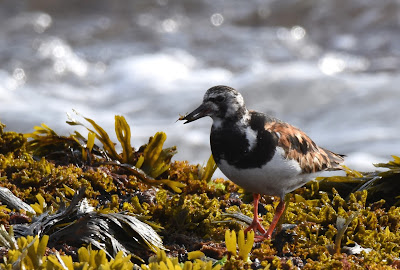(caroming
from Donald Trump's The Art of the Deal)
The outgoing tide reveals a nice opportunity on the Atlantic
Seaboard.
A man seizes the moment behind the plume (look closely.)
He advances decisively without losing his shirt or his hat.
He surmounts the subordinated sea and stands, casting for
big fish.
An occasional distraction whips up on the other side of the aisle but he locks to his base.
He disdains fake news and summons alternative facts.
He presides over a reality show in the center of make-believe.
An impertinent drama swirls around his feet.
He narrows his eyes and blames the swamp.
Then climate change breaks over paradise.
Tidal rhythms dampen the negotiations.
An ancient calculus re-asserts the Heart of the Deal.
A play of pride and peril clears the resilient stage.












































